
SWORD ART ONLINE Fractured Daydream was provided by Bandai Namco Entertainment for review. Thank you!
SWORD ART ONLINE is a franchise that has divided many. I remember when the anime aired its first episodes, which had a great response. But since then, the franchise has had ups and downs, no more so than in its video game adaptations, which often receive a mediocre response from players. But Fractured Daydream may be a big step up for the series.
It should be noted here that Fractured Daydream is primarily an online title. While you can play offline, you'll only have the game's story mode and miss out on the extra multiplayer-only modes. Also, suppose you choose to play in online mode and lose connection, such as by being inactive for some time or by putting your device in sleep mode and waking it up again. In that case, you will be sent back to the main menu, losing that current mission's progress, even in the single-player story mode.
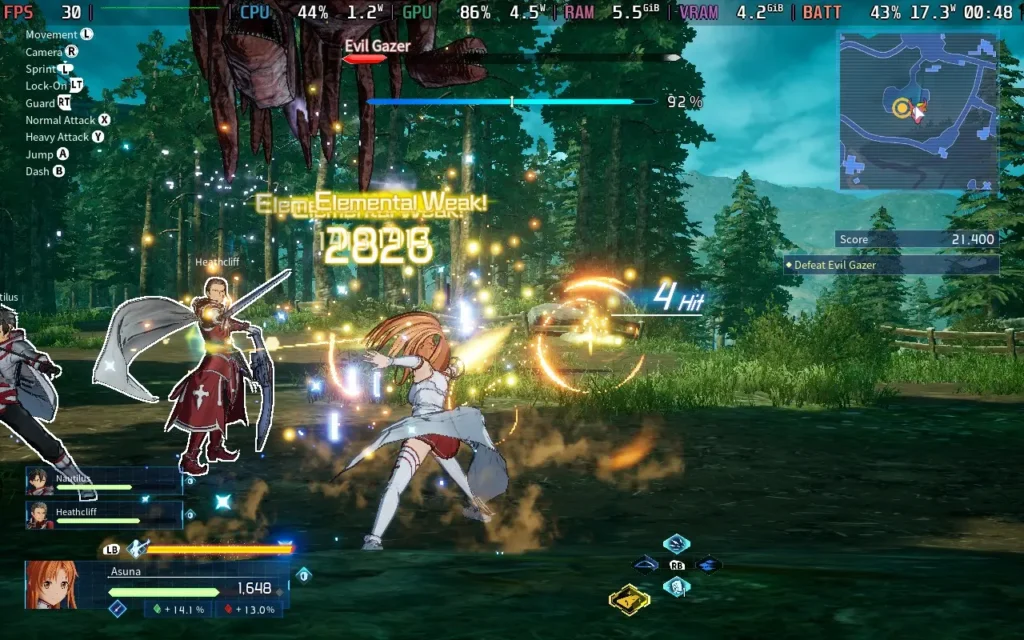
Approaching Fractured Daydream's story from the viewpoint of someone with minimal experience with SWORD ART ONLINE is a little daunting. The game is designed for fans of the series, and because of that, you'll see references to other pieces of media that you likely won't understand if you aren't versed in the lore. Notably, characters are not introduced, and players are expected to know who they are and their relationship with Kirito, the primary protagonist of the franchise and this game's protagonist.
The game's story mode is structured into many short and sweet missions. They tend to be pretty dialogue-heavy and range in length from around 5 minutes to around 15 minutes. Some are more cutscene than gameplay, but the story is interesting and well-voiced. There is only a Japanese dub available, so there is no English voice acting. The average player will probably take 7-8 hours to play through the story mode.
The storyline involves a new feature being added to the virtual world that has caused a glitch, resulting in mass confusion for the players in the game (including amnesia because this is anime). Odd events begin occurring, such as virtual entities appearing that shouldn't be able to exist in this world. It's up to Kirito and his party to find out what happened and how to fix it.

There are 2 difficulty options, "Normal" and "Easy." However, selecting Easy will limit the kind of loot you can get. Normal is easier anyway, so I wouldn't worry about it. I played through the first chapter of the game without coming close to death, and I'm not exactly an expert at these types of games.
The combat in Fractured Daydream is pretty decent. It follows your usual hack 'n' slash formula, and you can abuse button mashing if you want to. There's no requirement for learning combo moves here. To spice things up, you can alternate between light and heavy attacks with your melee characters, and every character has special abilities that you can fire off by using RB + 1 of the face buttons. You can also use an ultimate ability by pressing RB + R3, which deals massive damage.
The variety here really comes from the different characters in the game. While you may have your favorites, you are forced to play various characters throughout the story mode (you can choose which you want in multiplayer modes). Some characters are ground melee and fight as you might expect a normal warrior to fight. However, other characters can fly, while others use ranged weapons instead, turning the game into a 3rd-person shooter.
All these combine to keep gameplay fresh, which could sometimes become monotonous button-mashing. The story mode constantly switches between weapon types, movement styles, and environments, which keeps things interesting, especially since the game's mission structure is fairly similar throughout. Thankfully, the variety of characters, weapons, and environments, plus the frequent story cutscenes/dialogue mixed with the repetitive mission structure, ease the blow.
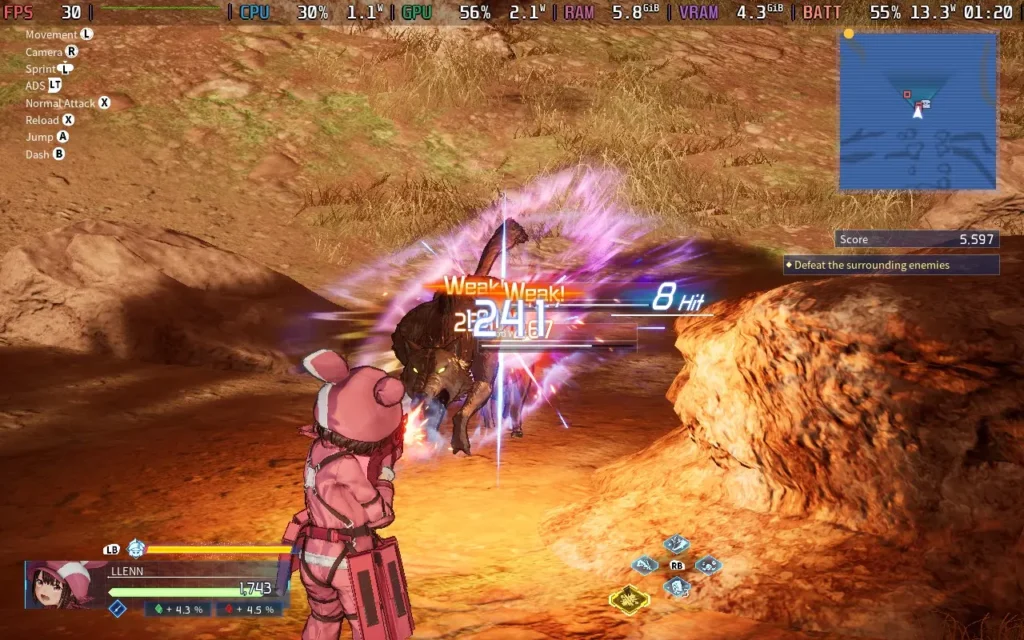
The visuals of Fractured Daydream hold up because of its well-translated anime art style. Even at lower settings, the game maintains clarity and appeal. This, combined with well-mixed sound effects and good voice acting, means the presentation leaves a good impression.
The downside to the story mode is the friendly AI. This is one of those games where your NPC allies are there to draw fire from the enemy rather than do anything useful. The damage they deal to enemies and the damage they take is negligible. Don't expect them to do much fighting for you, but on the flip side, you don't have to worry about them dying on you, either. They are also terrible at pathfinding, so they'll usually teleport to you after a while. This means you can be alone in a combat situation until they teleport.
But all we've talked about so far is the story mode. A big feature touted for Fractured Daydream pre-release was its 20-player online battles.
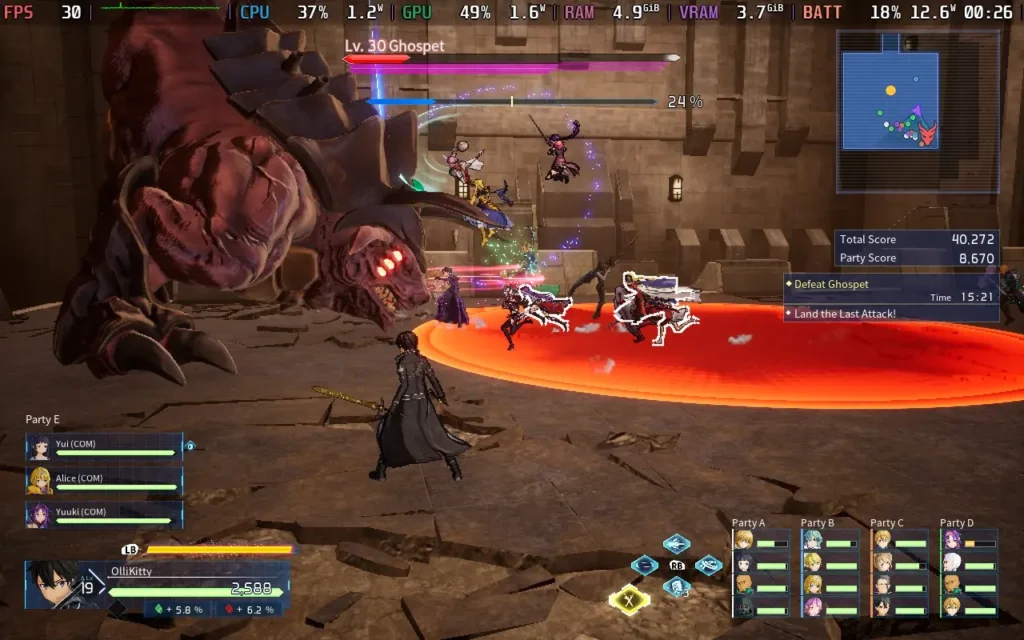
The online play of Fractured Daydream was a lot of fun for me. There are a few different "Quests" that you can embark on, of varying difficulty and location, and on these quests, you'll initially be in a party of 4. Gradually, you'll meet up with 4 other parties to make a combined total of 20 players, at this point, you'll need to face off against the final boss.
It all creates a great sense of cooperation and camaraderie. Even though each party has its score and at the end of the quest, a party will be rated as the "best" party, and you're all still working together to complete the objectives and defeat the boss. It's just plain and simple fun at the end of the day, with no stressing, and no worrying about toxic teammates, this is my kind of online experience. Even if another party member falls, any of the 20 players can revive them, which lets the true cooperative nature shine through.
The only downside to the online game I found was that sometimes the game is overzealous and puts you in a match without 20 human players. Once, the game was matchmaking for nearly 2 minutes, and a full 20-player lobby was found. However, most of my subsequent games only waited around 20-30 seconds, and the player count was usually 5-8 players, meaning some parties were just 1 player. Fortunately, bots will fill empty player slots, and the bots in multiplayer are more competent than the NPCs that "help" you in the story mode.
If you want an even more casual experience, you can go into "free roam" online, which lets you explore a couple of the game's maps with other players. There is also a boss raid mode if that's your cup of tea, although you'll need to play a bit of multiplayer before that unlocks.
Fractured Daydream gets off to a good start. We have proper 1280x800 resolution support, meaning no black bars on the Steam Deck's display, and the game has excellent controller support, which is my preferred way to play it.
We can play with many graphical settings to get the game running as we want, so let's look at my recommended settings.
It's also worth noting that my settings never seemed to save, and when I rebooted the game, the settings would always default to the lowest. I'm unsure if this is a Steam Deck issue where the game is set to always run on the lowest settings on the Steam Deck, but it is annoying.
In SteamOS, I applied a 30 FPS / 60Hz frame limit; there is no TDP limit. As for the in-game settings, we have a solid mix of medium and low across the board to make it look as great as possible while getting as close to a stable 30 FPS.
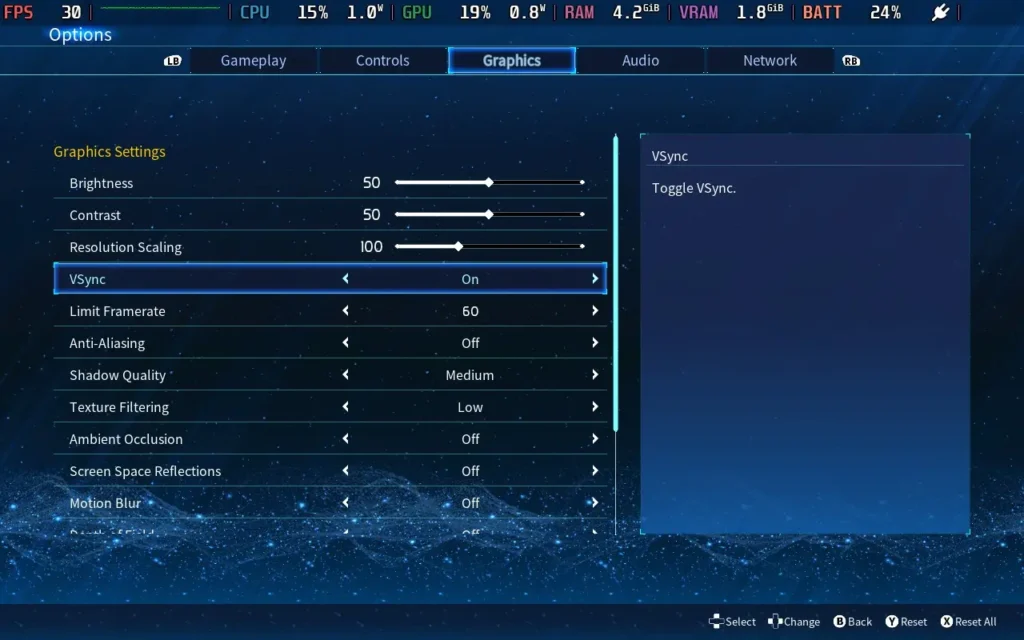
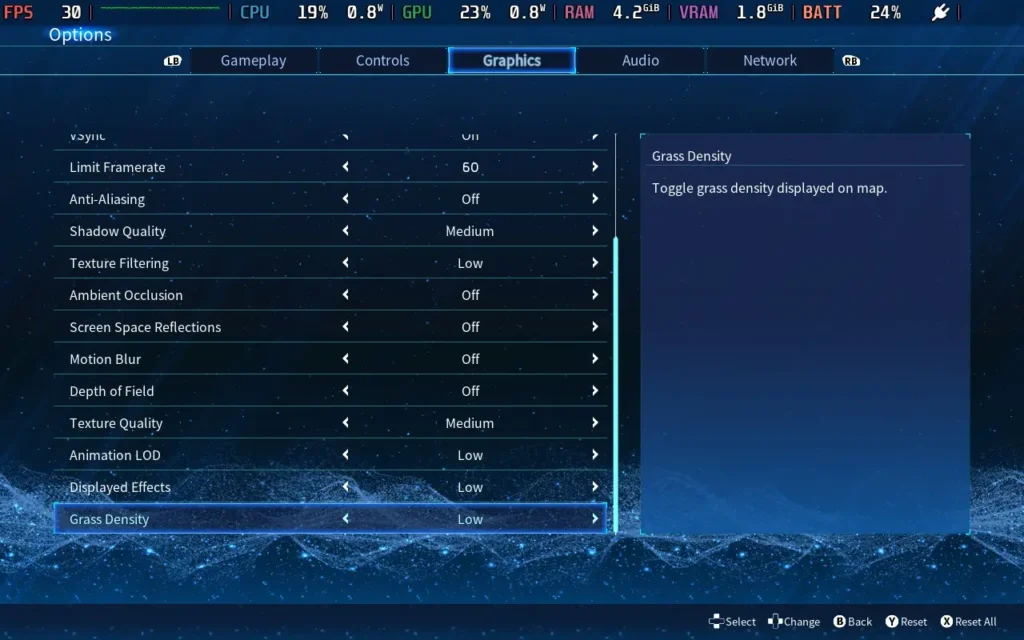
With these settings, we can have an almost completely stable 30 FPS in story mode. Some levels, such as those with dense foliage or lighting effects, have slight slowdowns. For example, an environment appearing in Chapter 2 drops to 27 FPS a few times during battle, but most environments will not drop from 30 FPS.
One problematic environment appears in Chapter 3. It has fog, which lowers the frame rate to the low 20s. Fortunately, it's a rare environment, and the combat areas tend to have less fog. However, this environment does appear in online play in some quests, which can cause issues there.
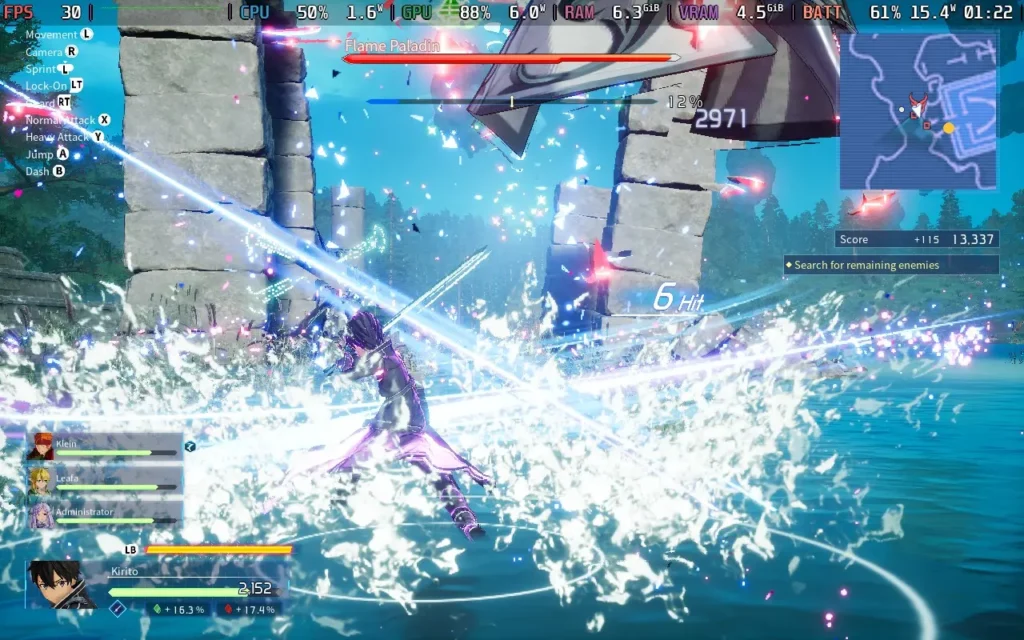
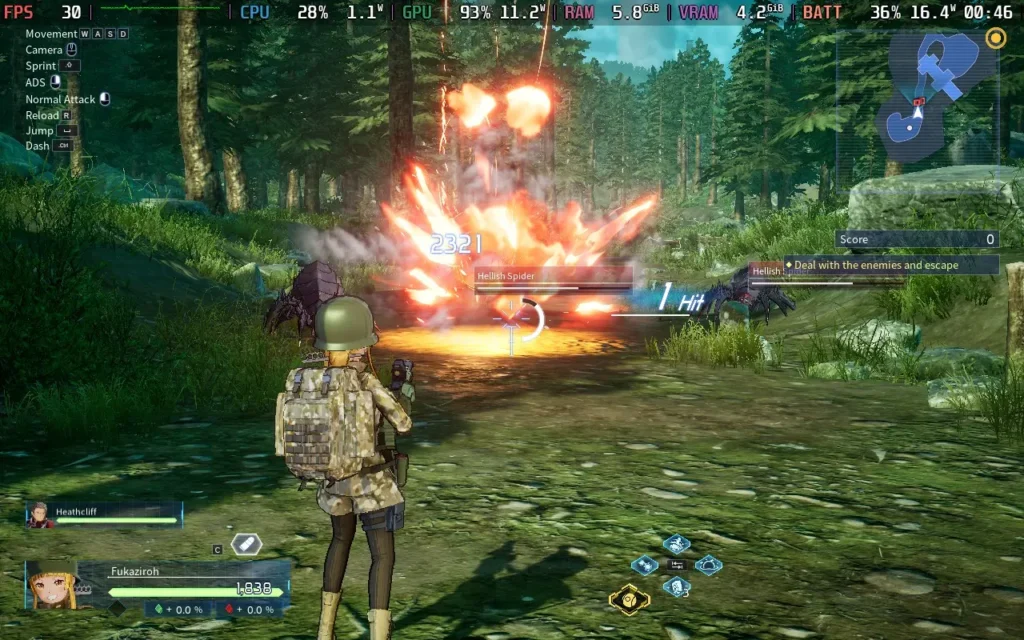
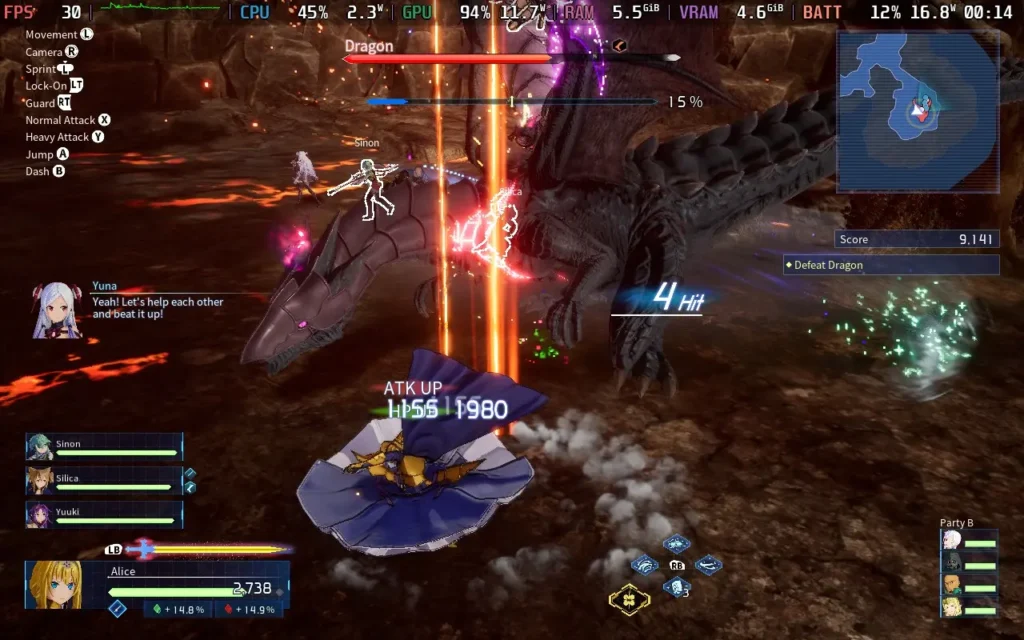
Sadly, my favorite part of the game, the online part, is the worst performing, and you'll want to turn Shadows down to "Low" to disable them. I also set my Resolution Scaling to 80%, which mitigated most of the dips in the frame rate. Even with shadows off and the 80% Scaling, you'll still see dips into the mid-20s when all 20 players are fighting a common enemy.
The saving grace here is that Fractured Daydream is not a game you "try hard" at. It's a reasonably casual experience, so even if you drop some frames, it isn't the end of the world, and it's unlikely to cause you to mess up or miss an attack, as the game is fairly forgiving.
Also, note that this isn't every map. The forest maps are often intensive. However, other maps, especially indoor ones, run at a constant 30 FPS, even online.
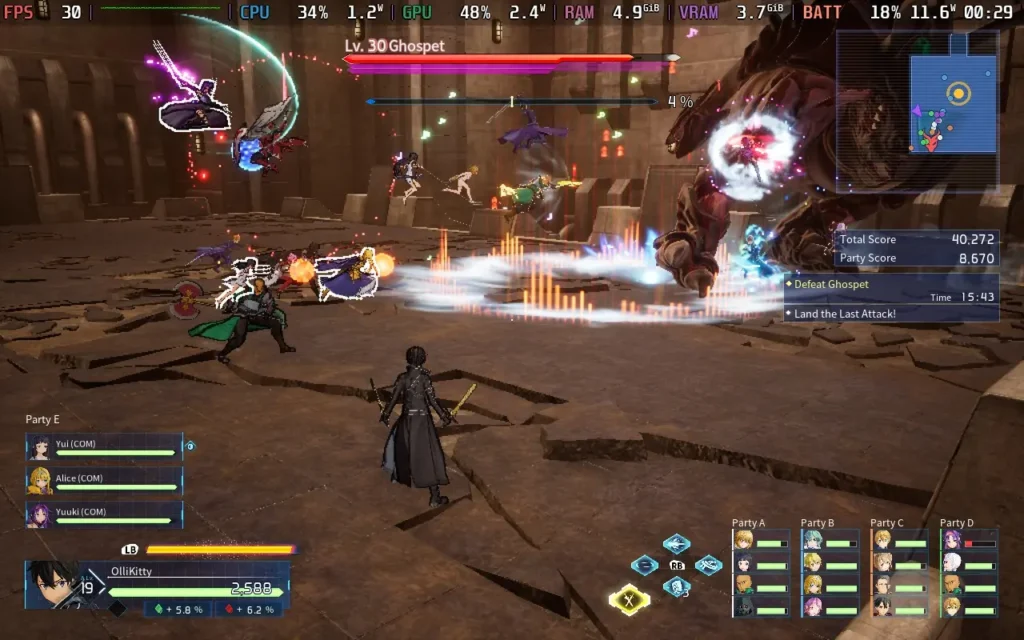
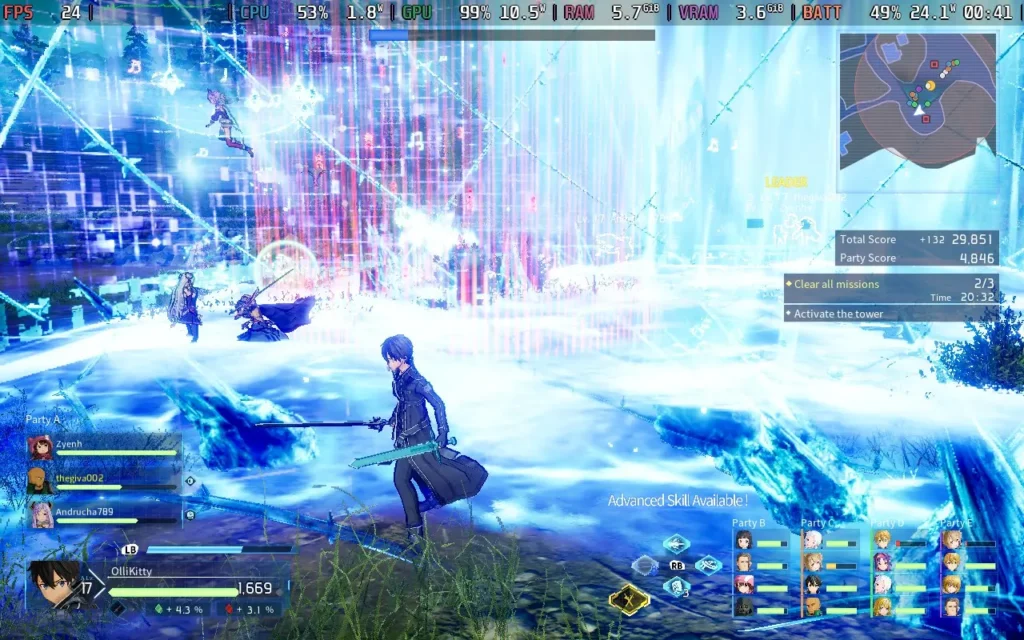
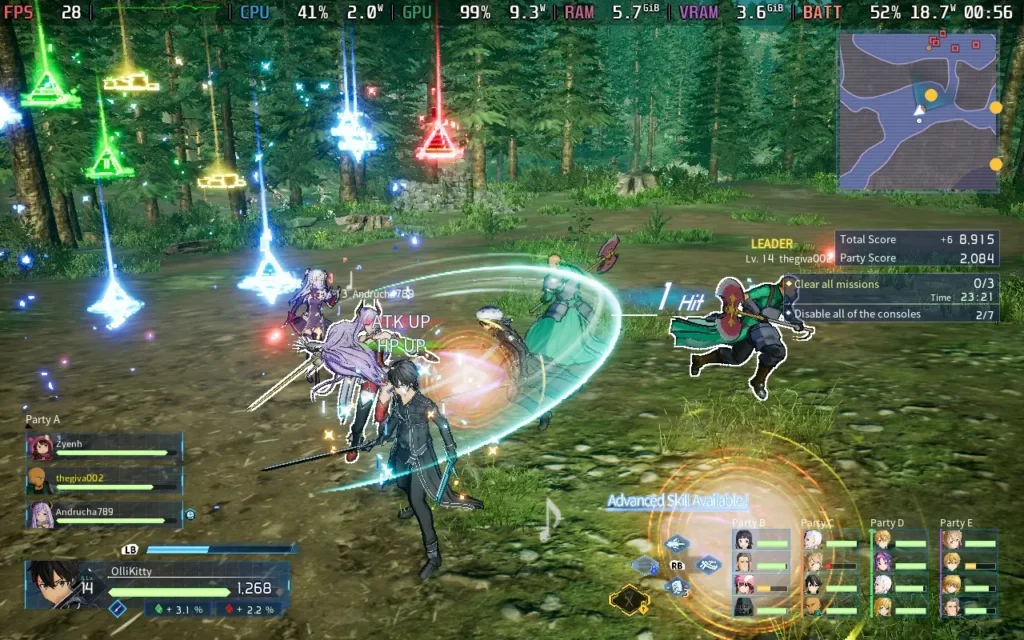
Power draw in the story mode often ranged between 13-18W, with some maps hitting 20-22W on very intensive moments. The online mode tends to stick towards the top end of these ranges. I saw mostly 16-22W during online play, with spikes to 24W. If you're playing story mode, expect 2.5 hours of battery from a Steam Deck LCD and 3 hours from a Steam Deck OLED. Online, you can knock 30 minutes off of each of those.
Temperatures are generally around 65-75C. In the environments that tax the Steam Deck, you can see temperatures up to 80C. The fan occasionally ramps up, but it isn't too bad.
You have a few accessibility options in Fractured Daydream. Namely, you can have an aim assist for ranged weapons, disable the screen shake, adjust camera sensitivity, and whether the camera controls are inverted.
You can also enable English Voice-Overs when players use quick commands in multiplayer, like pinging. This will ensure that the characters speak in English instead of Japanese when giving instructions.
SWORD ART ONLINE Fractured Daydream has a crowd that it caters to and caters to that crowd well, in my opinion. The story mode is designed with SWORD ART ONLINE fans in mind, with references to numerous anime story arcs and characters appearing with sound cues that signify that their presence is significant. Sadly, why their presence is significant isn't conveyed in the game, so your poor reviewer (who isn't an SAO fan) had to go look at a wiki to find out why this person appearing is such a big deal!
Fortunately, for non-SAO fans, the storyline is generally decent, the concept of SAO is easy enough to grasp, and you can sort of figure out what's going on as the story progresses. The gameplay also doesn't disappoint, with over-the-top visual effects firing off in every direction, making you feel like you're using weapons of mass destruction on that spider-looking thing about the size of a large dog.
Performance on Steam Deck is middling, and while the story mode largely runs well, you do have to put up with some pixelation due to the resolution scaling if you want somewhat stable performance in online play. However, the game is fully playable on the Steam Deck, with great controls and acceptable performance.
If you are a SWORD ART ONLINE fan, I don't think it would be a stretch to say that Fractured Daydream might be the best SWORD ART ONLINE video game yet.
Our review is based on the PC version of this game.
If you enjoyed this review, be sure to check out the rest of the content on SteamDeckHQ! We have a wide variety of game reviews and news that are sure to help your gaming experience. Whether you're looking for news, tips and tutorials, game settings and reviews, or just want to stay up-to-date on the latest trends, we've got your back.
SWORD ART ONLINE Fractured Daydream is a fun time, especially for SAO fans, and although it doesn't run great on the Steam Deck, it is perfectly playable.
No Forced Compatibility
Resolution Scaling: 100 (80 for Online)
VSync: On
Limit Framerate: 60
Anti-Aliasing: Off
Shadow Quality: Medium (Low for Online)
Texture Filtering: Low
Ambient Occlusion: Off
Screen Space Reflections: Off
Motion Blur: Off
Depth of Field: Off
Texture Quality: Medium
Animation LOD: Low
Displayed Effects: Low
Grass Density: Low